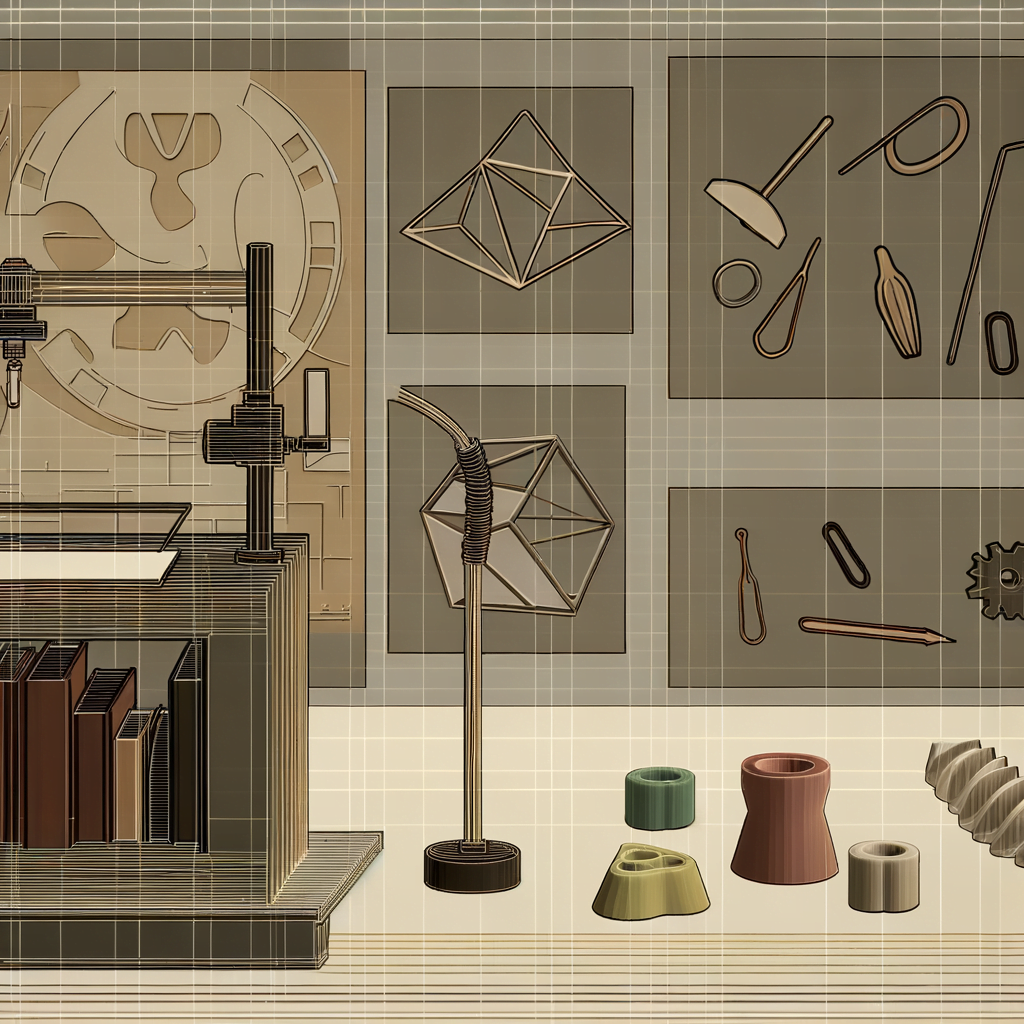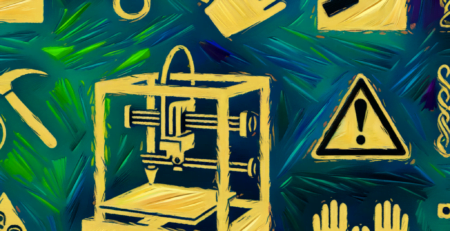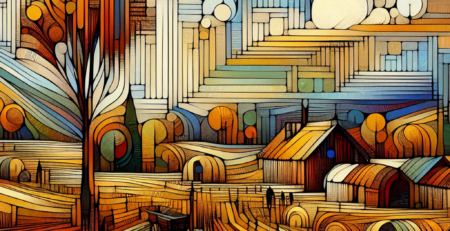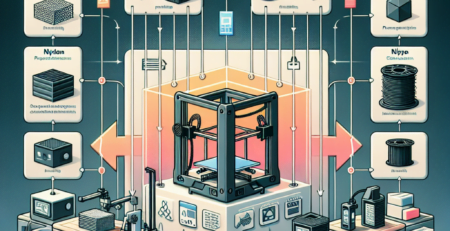3D Printing Techniques – A Guide to Some of the Most Important Terms and Methods
Tabla de contenido
“Unlocking Dimensions: Mastering the Art of 3D Printing Techniques and Terms”
Introducción
3D printing, also known as additive manufacturing, encompasses a variety of techniques used to create three-dimensional objects by layering material. Each method has its own unique processes, materials, and applications. Some of the most prominent 3D printing techniques include Fused Deposition Modeling (FDM), Stereolithography (SLA), Selective Laser Sintering (SLS), and Digital Light Processing (DLP). These methods differ in the way layers are deposited, the types of materials they can use, and the level of detail and finish they can achieve. Understanding these key terms and methods is essential for anyone interested in the field of 3D printing, as they determine the suitability of a technique for a specific application and influence the final properties of the printed object.
Exploring Additive Manufacturing: Key Techniques in 3D Printing
3D printing, also known as additive manufacturing, has revolutionized the way we create objects, from simple models to complex functional parts. This technology builds objects layer by layer, allowing for intricate designs that would be difficult or impossible to achieve with traditional subtractive manufacturing methods. As the industry evolves, a myriad of 3D printing techniques have emerged, each with its own set of terms and methods. Understanding these can provide valuable insight into the capabilities and limitations of different 3D printing processes.
One of the most widely recognized techniques is Fused Deposition Modeling (FDM), also referred to as Fused Filament Fabrication (FFF). This method involves the extrusion of a thermoplastic filament through a heated nozzle, which is deposited layer by layer onto a build platform. The material hardens immediately after extrusion, allowing for the creation of a solid object. FDM is particularly popular for its ease of use and the wide availability of materials, making it suitable for prototyping and hobbyist projects.
Another significant technique is Stereolithography (SLA), which is known for its high resolution and surface finish. SLA uses an ultraviolet laser to cure and solidify a photosensitive resin. The laser traces the object’s cross-section on the surface of the liquid resin, hardening it, before the build platform moves to allow the next layer to be formed. This process continues until the entire object is fabricated. SLA is ideal for applications that require precision and a smooth surface, such as dental and jewelry industries.
Selective Laser Sintering (SLS) is a powder-based 3D printing technique that also uses a laser to fuse material together. Unlike SLA, SLS does not require support structures since the powder bed itself supports the parts during printing. This allows for the creation of complex geometries with internal features that would be challenging to produce with other methods. SLS is commonly used with nylon and other polymers, but metal variants such as Direct Metal Laser Sintering (DMLS) exist, expanding the technology’s application to aerospace and automotive sectors.
A newer addition to the 3D printing family is Digital Light Processing (DLP), which is similar to SLA in that it also uses a photosensitive resin. However, instead of a laser, DLP employs a digital projector screen to flash a single image of each layer all at once, significantly speeding up the printing process. DLP is particularly advantageous for applications where speed is critical without compromising on the quality of the print.
Multi Jet Fusion (MJF) is an advanced technique developed by Hewlett-Packard that prints parts with fine detail and excellent mechanical properties. MJF spreads a layer of powder material onto the build platform and then prints a fusing agent over the powder where the particles need to be bonded together. A heating element then passes over the build area, fusing the particles to form a solid layer. This process is repeated until the part is complete. MJF is known for its speed and the ability to produce strong, functional parts with isotropic properties.
Each 3D printing technique has its unique advantages and limitations, and the choice of method depends on the specific requirements of the project at hand. Factors such as material choice, mechanical properties, surface finish, precision, and production speed all play a role in determining the most suitable technique. As the technology continues to advance, the boundaries of what can be achieved with 3D printing are constantly being pushed, opening up new possibilities across various industries. By familiarizing oneself with these key techniques and terms, one can better navigate the ever-expanding landscape of additive manufacturing.
Layer-by-Layer: Understanding the Different 3D Printing Processes

3D Printing Techniques – A Guide to Some of the Most Important Terms and Methods
In the realm of manufacturing and prototyping, 3D printing stands out as a revolutionary technology that has transformed how products are designed and produced. This additive manufacturing process builds objects layer-by-layer, allowing for the creation of complex geometries that would be difficult or impossible to achieve with traditional subtractive methods. To fully appreciate the capabilities and diversity of 3D printing, it is essential to understand the various techniques and terminologies that define this innovative field.
One of the most widely recognized 3D printing methods is Fused Deposition Modeling (FDM), also known as Fused Filament Fabrication (FFF). This technique involves the extrusion of a thermoplastic filament through a heated nozzle, which is deposited layer by layer onto a build platform. As the material cools and solidifies, it fuses with the previous layer, gradually building up the desired object. FDM is particularly popular for its ease of use, affordability, and the wide range of available materials, making it a go-to choice for hobbyists and professionals alike.
Transitioning from plastic-based processes to those that manipulate metal, Selective Laser Sintering (SLS) and Direct Metal Laser Sintering (DMLS) are powder bed fusion techniques that use a laser to sinter powdered material. SLS typically works with nylon or other polymers, while DMLS is used with metal powders. In both cases, the laser selectively fuses powder particles together, layer by layer, until the object is complete. These methods are renowned for producing parts with high strength and complexity, and they are often employed in aerospace, automotive, and medical industries.
Another pivotal technique is Stereolithography (SLA), which is considered one of the earliest forms of 3D printing. SLA utilizes an ultraviolet (UV) laser to cure and solidify a photosensitive resin within a vat, layer by layer. The build platform lowers incrementally with each new layer, allowing the laser to shape the next cross-section of the part. SLA is known for its exceptional surface finish and detail resolution, making it ideal for applications that require precision, such as dental work, jewelry, and prototyping for consumer goods.
Similarly, Digital Light Processing (DLP) operates on the principle of vat polymerization but uses a digital light projector to flash a single image of each layer all at once, significantly speeding up the process compared to SLA. The rapid curing of entire layers makes DLP a highly efficient method for producing detailed parts with smooth surfaces.
Moving beyond light-based technologies, Binder Jetting is a process where a liquid binding agent is selectively deposited onto a powder bed, bonding these areas together to form a part. After printing, the unbound powder is removed, and the part can be infiltrated with another material to improve its mechanical properties. Binder Jetting is versatile, capable of working with metals, sand, and ceramics, and is often used for full-color prototypes, complex metal parts, and large-scale sand casting molds.
Lastly, Material Jetting functions somewhat like a traditional inkjet printer, but instead of ink, it jets droplets of a photosensitive material that are cured by UV light. This method can produce parts with high accuracy and a smooth surface finish, and it also allows for the creation of multi-material and multi-color objects.
Each 3D printing technique offers unique advantages and limitations, catering to different needs across a broad spectrum of industries. As the technology continues to evolve, the potential applications of 3D printing expand, promising to further revolutionize the way we conceive and fabricate objects in the future. Understanding these processes is not only crucial for those directly involved in manufacturing but also for anyone interested in the cutting-edge developments that are shaping the world of production and design.
From FDM to SLS: Breaking Down 3D Printing Technologies
3D Printing Techniques – A Guide to Some of the Most Important Terms and Methods
The advent of 3D printing has revolutionized the way we conceive and fabricate objects, from simple household items to complex components used in various industries. As this technology continues to evolve, it is essential to understand the key terms and methods that define the landscape of 3D printing. This guide will elucidate some of the most significant techniques, providing a clearer picture of the capabilities and applications of each.
One of the foundational methods in 3D printing is Fused Deposition Modeling (FDM), also known as Fused Filament Fabrication (FFF). This technique works by extruding thermoplastic materials through a heated nozzle, laying down material layer by layer to construct an object. The process begins with a digital model, which is sliced into thin cross-sections by specialized software. The printer then follows these blueprints, precisely depositing melted material onto the build platform. FDM is widely appreciated for its cost-effectiveness and ease of use, making it a popular choice for hobbyists and educational settings.
Transitioning from FDM, another pivotal technology is Stereolithography (SLA). This method employs a vat of photopolymer resin, which is selectively cured by a laser or light source to form solid layers. The build platform is dipped into the resin, and as each layer is cured, it is lifted incrementally to allow fresh resin to flow beneath it. SLA is renowned for its high resolution and smooth surface finish, which is why it is often utilized for creating prototypes that require fine detail and aesthetic appeal.
Similarly, Digital Light Processing (DLP) operates on the principle of vat polymerization. However, instead of a laser, DLP uses a digital projector screen to flash a single image of each layer all at once, significantly speeding up the printing process. This method is particularly advantageous for applications where time is of the essence, without compromising on the quality of intricate details.
Moving on to powder-based techniques, Selective Laser Sintering (SLS) stands out as a powerful method for creating durable and complex parts. SLS uses a high-powered laser to fuse small particles of polymer powder together, building an object layer by layer. Unlike FDM and SLA, SLS does not require support structures since the unsintered powder acts as a self-supporting material. This characteristic allows for the creation of intricate geometries that would be impossible with other methods. SLS is a favorite in industries that demand robust functional parts, such as aerospace and automotive.
Another advanced powder-based technology is Electron Beam Melting (EBM), which is similar to SLS but uses an electron beam as the power source to melt metal powder. EBM is capable of producing parts with excellent mechanical properties, making it ideal for high-stress applications in the medical implant and aerospace sectors.
Lastly, Material Jetting is a process that works much like a traditional inkjet printer. It jets droplets of a photopolymer onto the build platform and cures them using UV light. This method can print in multiple materials and colors simultaneously, offering a high degree of design freedom and the ability to create parts with varying material properties.
In conclusion, the realm of 3D printing is vast and filled with a plethora of techniques, each with its unique advantages and suited applications. From the simplicity and accessibility of FDM to the precision of SLA and the strength of SLS, these methods have paved the way for innovation across countless fields. As technology continues to advance, the potential for 3D printing seems boundless, promising a future where the only limit to what can be created is the imagination.
Conclusión
Conclusión:
3D printing, also known as additive manufacturing, encompasses a variety of techniques that are revolutionizing manufacturing and prototyping. Key terms and methods include Fused Deposition Modeling (FDM), which uses thermoplastic filaments; Stereolithography (SLA), which employs UV light to cure liquid resin; Selective Laser Sintering (SLS), which fuses powder particles using a laser; and Digital Light Processing (DLP), similar to SLA but uses a digital light projector. Other important methods include Multi Jet Fusion (MJF), Electron Beam Melting (EBM), and Direct Metal Laser Sintering (DMLS) for metal printing. Each technique has its own advantages, limitations, and applications, making the choice of method dependent on the specific requirements of the print job, such as material, resolution, strength, and cost. As technology advances, these methods are becoming more accessible and versatile, pushing the boundaries of what can be manufactured and how quickly it can be done.





Deja una respuesta